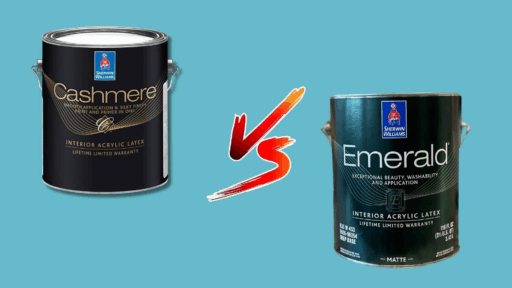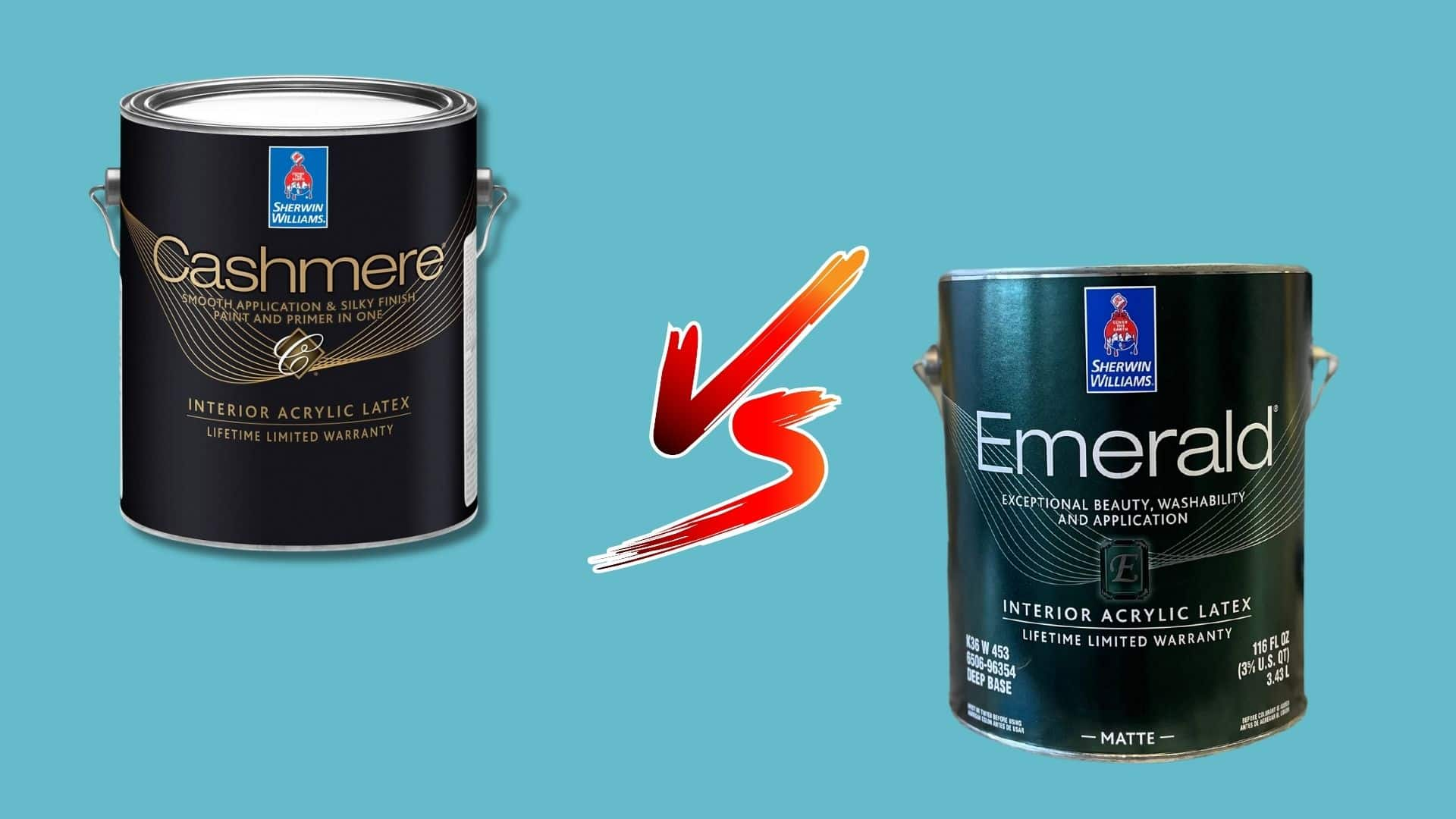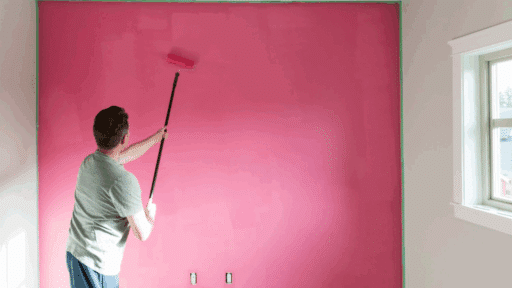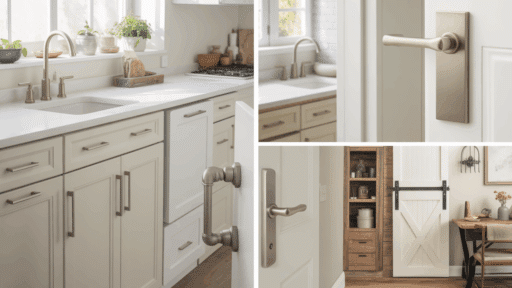Picking the right paint is a big deal. It can decide If your project turns out great or just okay.
With so many choices, it’s easy to feel confused, especially when you’re standing on the Sherwin-Williams shelf.
Two names that stand out are Cashmere and Emerald. Both are well-known for good reasons, but they come with different strengths and price tags.
So, which one should you spend your money on? Sherwin-Williams has been around since 1866 and is known for making paint people trust.
No matter if you’re doing it yourself or hiring help, the paint line you pick will affect how it looks and how long it lasts.
In this guide, we’ll compare Kashmere and Emerald in price, ease of use, strength, and more. By the end, you’ll have an idea of which paint is best for your home.
Understanding Sherwin-Williams’ Cashmere
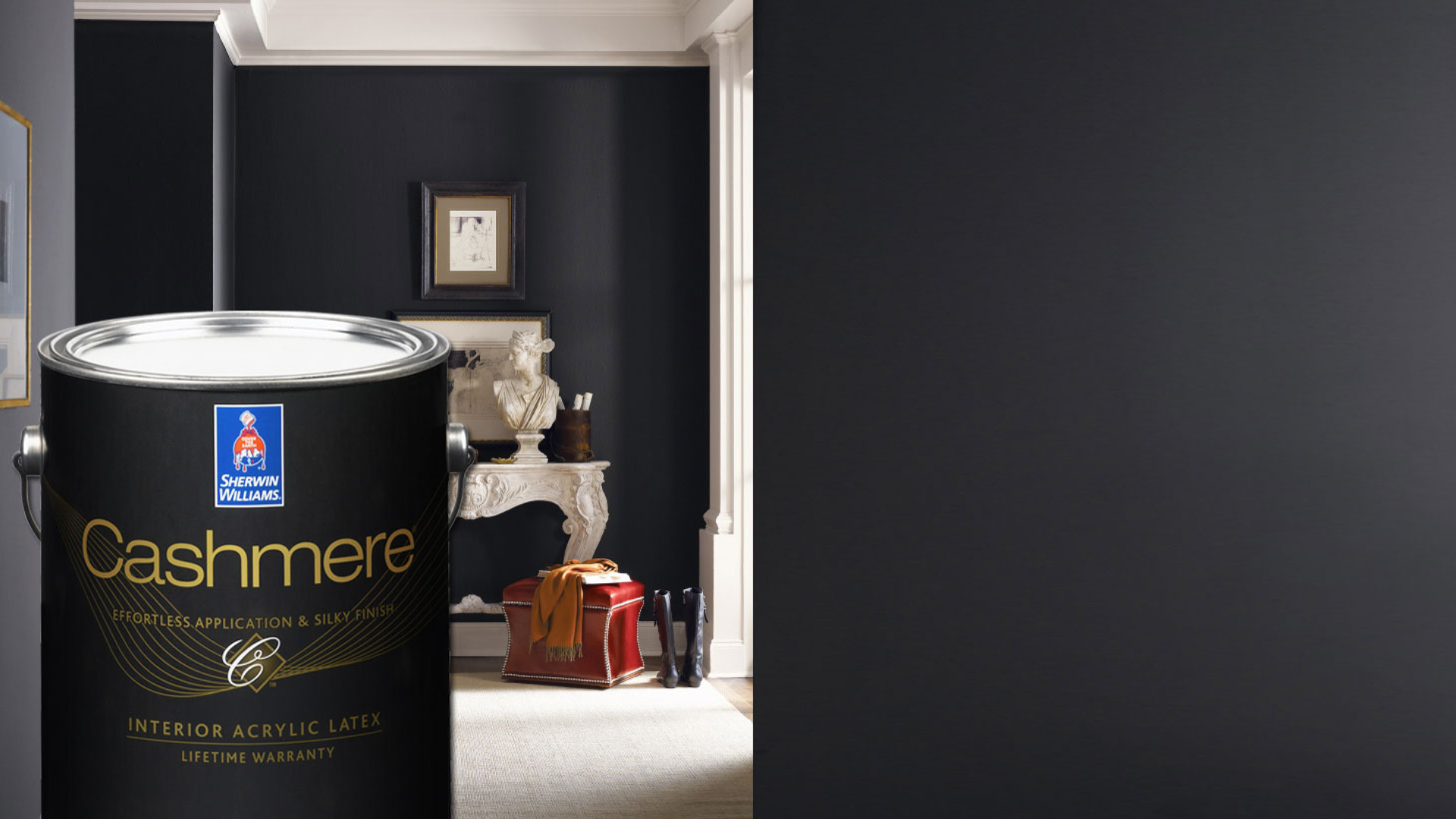
Sherwin-Williams Cashmere is a mid-to-high-priced interior paint that goes on smoothly and looks polished.
It was released in 2002 and quickly became a favorite among people who want pro-looking results without needing special skills.
One of the best things about Cashmere is that it levels itself as you paint.
This means fewer brush marks or roller lines, resulting in smoother-looking walls when they dry. The finish feels soft and has a nice, velvety texture.
Cashmere is best suited for indoor walls and is available in several sheens, including flat, low luster, pearl, and medium luster.
It’s not the toughest paint in the lineup, but it holds up well in rooms that don’t see a lot of wear.
Understanding Sherwin-Williams’ Emerald
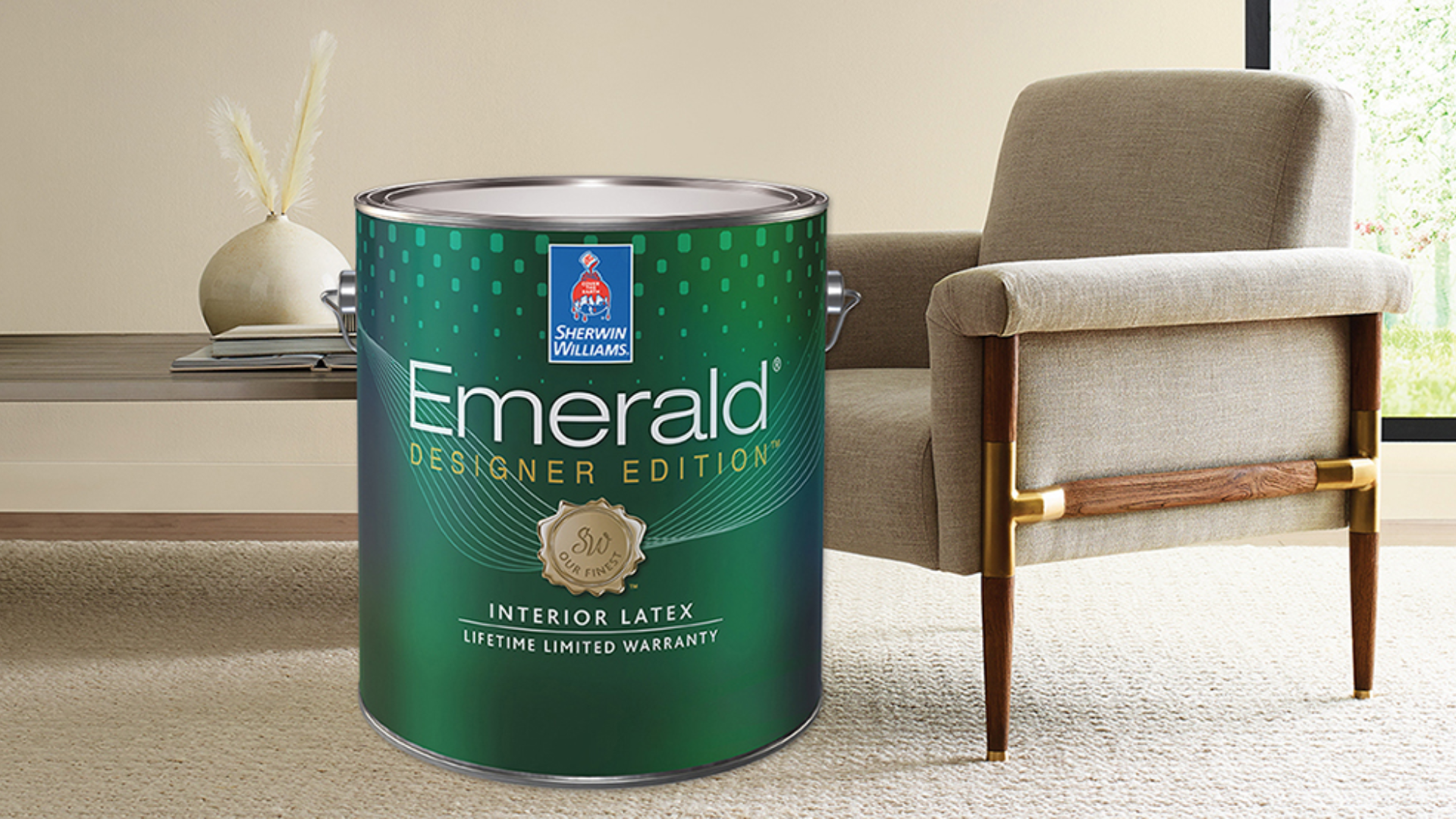
Emerald is the Sherwin-Williams paint line. Its advanced features help it withstand tough use.
You can use it indoors or outdoors, and it’s built to withstand daily wear, cleaning, and even adverse weather conditions.
What makes Emerald special is its strength. It resists stains, scuffs, and scratches better than most paints. It also resists water spots and maintains its finish even after multiple cleanings.
It’s a great choice for rooms like kitchens, bathrooms, and busy hallways. The paint fights mildew, making it perfect for damp areas as well. Outside, it stays bright and doesn’t fade easily.
Emerald requires a bit more skill to apply, and it doesn’t show itself. Cashmere.
Cashmere has many pros, and experienced painters like the results. It comes in flat, matte, satin, and semi-gloss finishes.
Cashmere vs Emerald: Key Differences
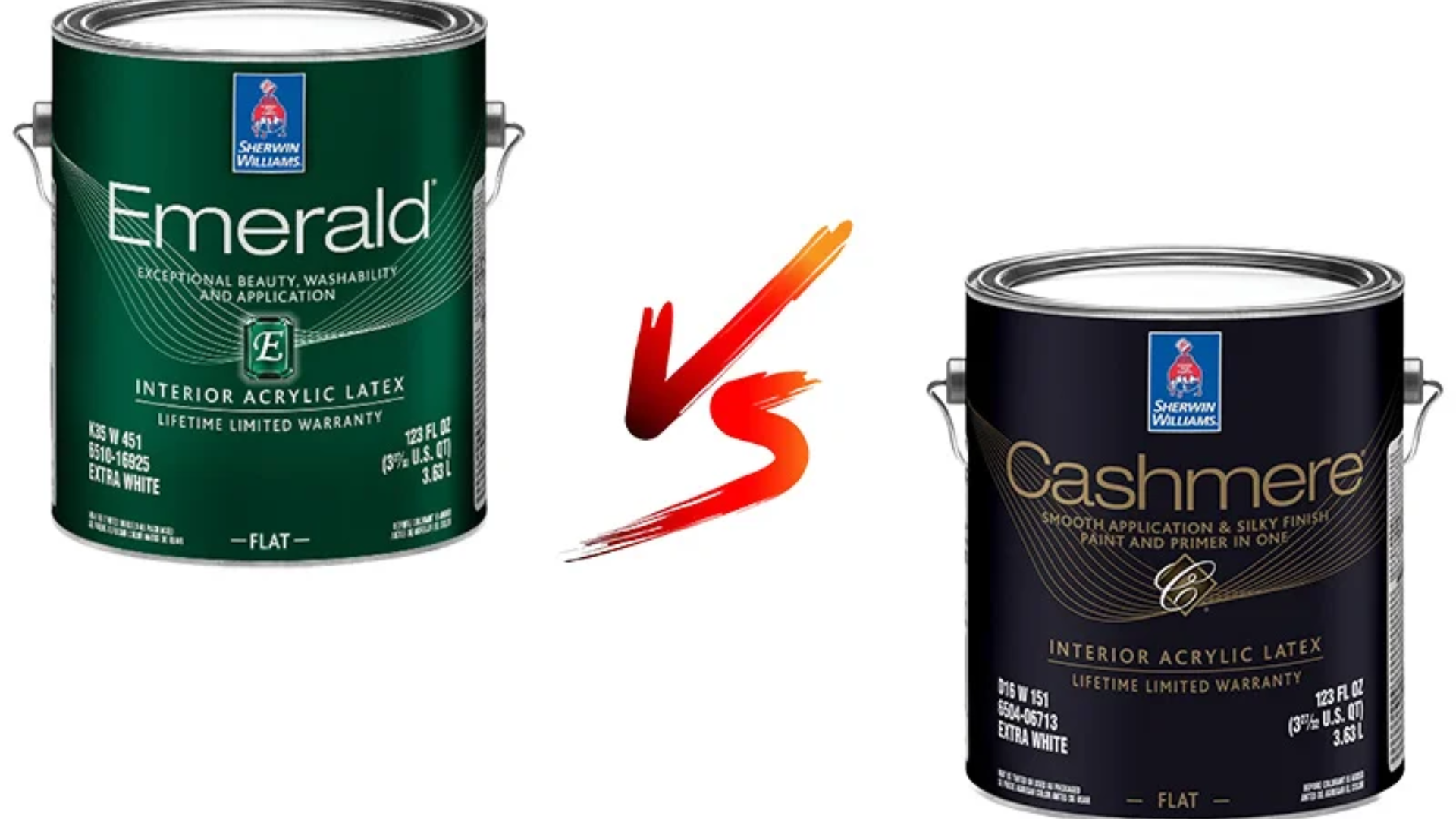
When comparing these two premium paint lines from Sherwin-Williams, several key differences should be considered. The following are the differences that will help you decide which is the better option for your specific project.
1. Price Point
When choosing between Cashmere and Emerald, the first thing most people notice is the price.
Emerald sits at the top of the Sherwin-Williams Cashmere range. If you’re paiyou’rea whole home, even a small difference per gallon can lead to big savings.
| Paint Line | Approx. Price (per gallon) | Best For | Estimated Total for 10 Gallons |
|---|---|---|---|
| Cashmere | $70–$75 | Mid-range jobs, DIY projects | $700–$750 |
| Emerald | $80–$85 | High-traffic areas, long-term results | $800–$850 |
Even though Emerald costs more, it may be worth it in the long run. It holds up better over time, so you may not need to repaint as often.
And if you’re paying for labor, the cost of paint is a smaller part of the whole project, making the upgrade easier to justify.
2. Durability
Durability is one of the most noticeable differences between Sherwin-Williams Cashmere and Emerald. While both paints are high-quality,
Emerald is built to last longer and hold up better under daily wear and tear. If you’re areas that see a lot of use, this should play a big role in your choice.
| Paint Line | Durability Level | Wear Resistance | Color Retention |
|---|---|---|---|
| Cashmere | Moderate | May show marks and burnishing in busy areas | May fade after a few years |
| Emerald | High (top-tier) | Strong resistance to scuffs, scratches, and rubbing | Holds original color for over 10 years |
Cashmere works well for lower-use spaces. But for long-term performance and tougher conditions, Emerald clearly stands out and can be worth the extra investment.
3. Application and Finish
The way a paint goes on and how it looks once dry can make a big difference, especially for DIY projects.
Cashmere and Emerald offer two very different painting experiences. Understanding these differences helps you choose the one that fits your comfort level and expectations.
| Paint Line | Application Ease | Self-Leveling | Final Appearance |
|---|---|---|---|
| Cashmere | Very smooth and easy for beginners | Yes – smooths out brush marks | Soft, velvety finish with a polished look |
| Emerald | Requires more control and a steady hand | No – may show lap marks | Even, durable finish when applied well |
Cashmere stands out for being beginner-friendly and leaving a smooth, silky finish with little effort.
Emerald takes more care and faster work but gives a solid, even look that holds up better over time.
4. Washability
How well paint holds up to messes matters a lot in homes with kids, pets, or lots of daily activity.
Washability is where Emerald clearly pulls ahead, offering stronger protection and easier cleaning than Cashmere.
| Cashmerene | Stain Resistance | Scrub Durability |
|---|---|---|
| Cashmere | Handles light stains; not ideal for heavy messes | It can wear down with frequent scrubbing |
| Emerald | Resists tough stains like coffee, crayons, and wine | Withstands repeated cleaning without damage |
Cashmere is fine for rooms with light use, but Emerald is built for tougher spots.
Its ability to stay clean and look fresh under heavy use makes it a better pick for high-traffic areas, even with the higher price.
5. VOC Content and Environmental Impact
Both Cashmere and Emerald are designed to be safer for indoor air and better for the environment than older paint formulas.
They meet strict VOC (volatile organic compound) limits, making them strong choices for homes that prioritize cleaner air and lower chemical exposure.
| Paint Line | VOC Level | Eco-Friendly Features |
|---|---|---|
| Cashmere | Low-VOC, meets environmental safety standards | |
| Emerald | Low-VOC, advanced water-based formula, made for green use |
While both paints are low-VOC and safe for indoor use, Emerald was built with a stronger focus on environmental performance.
If minimizing paint smell or reducing chemical exposure is a top priority, Emerald gives you a slight edge.
6. Sheen Options
Both Cashmere and Emerald offer a variety of sheen levels, but they differ in naming, shine, and how the finish appears once dry.
Knowing these differences can help you choose the best look for your space.
| Paint Line | Available Sheens | Sheen Notes |
|---|---|---|
| Cashmere | Flat Enamel, Low Lustre, Pearl, Medium Lustre | Softer, silkier look; Low Lustre may appear shinier than expected |
| Emerald | Flat, Matte, Satin, Semi-Gloss | More traditional finish levels; easier to match with existing home finishes |
Cashmere offers more unique finishes that feel soft and refined, but may not match common standards.
Emerald provides more predictable options, making it a better choice for homes that need consistent finishes throughout.
When to Choose Cashmere vs Emerald?
Choosing between Sherwin-Williams Cashmere and Emerald depends on what matters most for your project – ease, durability, or long-term value.
Cashmere:
- You’re low-traffic areas
- You want a smooth, velvety finish
- You’re on your budget
- The space doesn’t wear and tear
- Appearance is your top priority.
Emerald:
- You’re high-traffic areas
- The space needs frequent cleaning
- You want maximum durability and longevity
- You’re exterior surfaces
- You have pets, kids, or a busy home
- You need strong stain resistance
- You’re okay for longer results
- Professionals are doing the work
Conclusion
After comparing Sherwin-Williams Cashmere and Emerald, the better paint depends on your needs and budget. Both are great, but they serve different purposes.
Emerald is the stronger, more durable option. It’s made for heavy use, resists stains, and stays clean even in busy areas.
If you want long-lasting results and don’t mind a higher cost, Emerald is the top choice.
Cashmere, on the other hand, is easier to apply and gives a smooth, soft look.
It’s perfect for DIYers who want a clean, professional-looking finish without the stress. Its self-leveling makes a big difference, especially for beginners.
Either way, you’ll get a high-quality product. Both are better than basic paints and come from a trusted brand.
Have you used Cashmere or Emerald in your home? We’d love to hear your experience!

